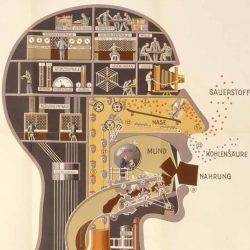 It may seem like an inevitable fact of administrative positions that anyone who fills them will be subjected to a never-ending litany of repetitive tasks. Employees in these jobs often don’t receive work that engages their brains or peaks their interests. Rather than flexing their critical thinking skills, these workers are resigned to completing the necessary, yet boring, administrative tasks.
It may seem like an inevitable fact of administrative positions that anyone who fills them will be subjected to a never-ending litany of repetitive tasks. Employees in these jobs often don’t receive work that engages their brains or peaks their interests. Rather than flexing their critical thinking skills, these workers are resigned to completing the necessary, yet boring, administrative tasks.
However, this rather bleak outlook is on the verge of changing with the advent of artificial intelligence. While the world’s first instance of robotics can be traced back to the invention of the Egyptian water clock over 3,500 years ago in 1500 BCE, AI wasn’t coined as a term until 1956. In this more modern robotic iteration, the idea was that a computer system can learn from each experience it encounters once it has a basis built from human ingenuity.
AI surrounds us today more than ever before. Virtual assistants, such as Siri and Alexa, have become commonplace devices that help homeowners do everything from creating a shopping list to turning up the thermostat. In the workplace, artificial intelligence has the potential to transform workforce productivity. However, as with any technological advancement, AI also has its pitfalls.
Before you take the side of being pro- or anti-AI, take a look at some of the advantages and disadvantages of the integration of artificial intelligence into the modern workforce.
An increase in productivity
One of the most noteworthy benefits of AI is the increase in productivity it provides businesses. A human can effectively perform up to about 10 hours of repetitive work on a good day. This number is even less on average when you factor in labor laws and the days when a person is feeling more tired than usual. A system powered by artificial intelligence can work for an indefinite amount of time. Robots don’t need rest and are not governed by regulations that limit the number of hours they can work in a week.
[perfectpullquote align=”right” bordertop=”false” cite=”” link=”” color=”” class=”” size=””]More of those menial tasks will be completed as AI works through the day and night with few interruptions[/perfectpullquote]
This ability to keep working at all hours of the day translates into a major increase in productivity for businesses. More of those menial tasks will be completed as AI works through the day and night with few interruptions. The only obstacle a business may face is when the machine’s code becomes corrupted and needs to be reset. However, the amount of time it takes to turn the system off and back on again is significantly less than the hours a human spends away from work.
AI also increases productivity by freeing up humans to take on more tasks that involve critical thinking. When workers don’t have to fill their time with the repetitive tasks on which a business relies, they can instead use their ingenuity and creativity to solve problems and contribute to innovative efforts. Not only is this work more engaging for the workers, but it is more valuable for the company in the end.
Error-free processing
To err is human. The same does not apply to computers. While humans may make an error in data processing due to fatigue, lack of knowledge, or any other factor, AI only makes a mistake if the person who programmed it made it first. Even this possibility for error is slight. The technology that makes AI possible is built on a language of mathematics and commands. This language doesn’t leave much room for error and the automated nature of the system greatly diminishes the chances for mistakes when compared to a human.
Although it may not seem like a human error would affect a business all that much, even the smallest one can have a negative ripple effect. One mistake in processing can skew a business’s numbers dramatically. Even the less extreme errors tend to cost a business money they could have used elsewhere. For any company looking to reduce costs associated with human error, turning to AI may be the solution.
Decreased number of jobs
Artificial intelligence has the potential to create more jobs for humans by allowing them to focus on more creative endeavors, but it is certain that the implementation of AI will also result in a significant number of job losses. According to Gartner, a global research and advisory firm, AI could create over 500,000 jobs in the United States. However, other analysts estimate that net job losses could number over 1 million if AI takes over parts of the workforce. Not only will repetitive administrative positions go to these advanced computer systems, but jobs that require less skill in places such as factories will also shift to the robots.
[perfectpullquote align=”right” bordertop=”false” cite=”” link=”” color=”” class=”” size=””]This shift will disproportionately affect those who hold more low-skill jobs[/perfectpullquote]
This shift will disproportionately affect those who hold more low-skill jobs. As people from low-income areas who did not pursue higher education tend to hold more of these jobs, they will be the ones most heavily impacted by the incorporation of AI into the workforce. For instance, driverless cars are already making their way onto the roads. Without the need for full-time human drivers, immigrants who tend to hold many of these positions will be without work as computer systems replace them.
Inability to make judgement calls
Artificial intelligence is capable of many things, but it may never be capable of making fair judgement calls in the way that humans can. While the human brain weighs the pros and cons of a situation and can make a decision based on the the circumstances at hand, AI will make a decision as it is programmed to do. Even the best computer system won’t be able to consider the minute, and often human, factors that impact a decision. The computer will simply use the equations with which a human initially programmed it to come to its conclusion.
[perfectpullquote align=”right” bordertop=”false” cite=”” link=”” color=”” class=”” size=””]Even the best computer system won’t be able to consider the minute, and often human, factors that impact a decision[/perfectpullquote]
An example of a bad AI judgement called occurred in Australia in 2014. There was a shooting in downtown Sydney and many people started to flee the area by ordering rides through Uber. As the demand in the concentrated area surged, Uber’s algorithms applied its trusted supply-and-demand surge charges and ride rates skyrocketed. The calculations couldn’t factor in the emergency situation happening downtown and the system charged victims outrageous prices for trying to leave a dangerous environment.
While humans can make adjustments to the algorithms now that they know this situation is a possibility, it doesn’t make it better for the people who had to go through that traumatic experience. Unless all solutions are anticipated and programmed from the start, AI can work to the detriment of humans or the surrounding environment.
There is no doubt that technology has worked throughout human history to advance society and improve quality of life. Artificial intelligence has the potential to do the same and has already done so for many people through the use of virtual assistants and other AI applications. However, the downsides to the technology are not something to ignore. The only thing that is certain is that AI can change the workforce for good, whether humans are ready for it or not.
Image: Der Mensch als Industriepalast (Man as an Industrial Palace) by Fritz Kahn
________________________________
 Dennis Spaeth is publisher of CTE Magazine
Dennis Spaeth is publisher of CTE Magazine















March 18, 2019
Artificial Intelligence is transforming the workforce as we know it
by Dennis Spaeth • AI, Comment, Technology
However, this rather bleak outlook is on the verge of changing with the advent of artificial intelligence. While the world’s first instance of robotics can be traced back to the invention of the Egyptian water clock over 3,500 years ago in 1500 BCE, AI wasn’t coined as a term until 1956. In this more modern robotic iteration, the idea was that a computer system can learn from each experience it encounters once it has a basis built from human ingenuity.
AI surrounds us today more than ever before. Virtual assistants, such as Siri and Alexa, have become commonplace devices that help homeowners do everything from creating a shopping list to turning up the thermostat. In the workplace, artificial intelligence has the potential to transform workforce productivity. However, as with any technological advancement, AI also has its pitfalls.
Before you take the side of being pro- or anti-AI, take a look at some of the advantages and disadvantages of the integration of artificial intelligence into the modern workforce.
An increase in productivity
One of the most noteworthy benefits of AI is the increase in productivity it provides businesses. A human can effectively perform up to about 10 hours of repetitive work on a good day. This number is even less on average when you factor in labor laws and the days when a person is feeling more tired than usual. A system powered by artificial intelligence can work for an indefinite amount of time. Robots don’t need rest and are not governed by regulations that limit the number of hours they can work in a week.
[perfectpullquote align=”right” bordertop=”false” cite=”” link=”” color=”” class=”” size=””]More of those menial tasks will be completed as AI works through the day and night with few interruptions[/perfectpullquote]
This ability to keep working at all hours of the day translates into a major increase in productivity for businesses. More of those menial tasks will be completed as AI works through the day and night with few interruptions. The only obstacle a business may face is when the machine’s code becomes corrupted and needs to be reset. However, the amount of time it takes to turn the system off and back on again is significantly less than the hours a human spends away from work.
AI also increases productivity by freeing up humans to take on more tasks that involve critical thinking. When workers don’t have to fill their time with the repetitive tasks on which a business relies, they can instead use their ingenuity and creativity to solve problems and contribute to innovative efforts. Not only is this work more engaging for the workers, but it is more valuable for the company in the end.
Error-free processing
To err is human. The same does not apply to computers. While humans may make an error in data processing due to fatigue, lack of knowledge, or any other factor, AI only makes a mistake if the person who programmed it made it first. Even this possibility for error is slight. The technology that makes AI possible is built on a language of mathematics and commands. This language doesn’t leave much room for error and the automated nature of the system greatly diminishes the chances for mistakes when compared to a human.
Although it may not seem like a human error would affect a business all that much, even the smallest one can have a negative ripple effect. One mistake in processing can skew a business’s numbers dramatically. Even the less extreme errors tend to cost a business money they could have used elsewhere. For any company looking to reduce costs associated with human error, turning to AI may be the solution.
Decreased number of jobs
Artificial intelligence has the potential to create more jobs for humans by allowing them to focus on more creative endeavors, but it is certain that the implementation of AI will also result in a significant number of job losses. According to Gartner, a global research and advisory firm, AI could create over 500,000 jobs in the United States. However, other analysts estimate that net job losses could number over 1 million if AI takes over parts of the workforce. Not only will repetitive administrative positions go to these advanced computer systems, but jobs that require less skill in places such as factories will also shift to the robots.
[perfectpullquote align=”right” bordertop=”false” cite=”” link=”” color=”” class=”” size=””]This shift will disproportionately affect those who hold more low-skill jobs[/perfectpullquote]
This shift will disproportionately affect those who hold more low-skill jobs. As people from low-income areas who did not pursue higher education tend to hold more of these jobs, they will be the ones most heavily impacted by the incorporation of AI into the workforce. For instance, driverless cars are already making their way onto the roads. Without the need for full-time human drivers, immigrants who tend to hold many of these positions will be without work as computer systems replace them.
Inability to make judgement calls
Artificial intelligence is capable of many things, but it may never be capable of making fair judgement calls in the way that humans can. While the human brain weighs the pros and cons of a situation and can make a decision based on the the circumstances at hand, AI will make a decision as it is programmed to do. Even the best computer system won’t be able to consider the minute, and often human, factors that impact a decision. The computer will simply use the equations with which a human initially programmed it to come to its conclusion.
[perfectpullquote align=”right” bordertop=”false” cite=”” link=”” color=”” class=”” size=””]Even the best computer system won’t be able to consider the minute, and often human, factors that impact a decision[/perfectpullquote]
An example of a bad AI judgement called occurred in Australia in 2014. There was a shooting in downtown Sydney and many people started to flee the area by ordering rides through Uber. As the demand in the concentrated area surged, Uber’s algorithms applied its trusted supply-and-demand surge charges and ride rates skyrocketed. The calculations couldn’t factor in the emergency situation happening downtown and the system charged victims outrageous prices for trying to leave a dangerous environment.
While humans can make adjustments to the algorithms now that they know this situation is a possibility, it doesn’t make it better for the people who had to go through that traumatic experience. Unless all solutions are anticipated and programmed from the start, AI can work to the detriment of humans or the surrounding environment.
There is no doubt that technology has worked throughout human history to advance society and improve quality of life. Artificial intelligence has the potential to do the same and has already done so for many people through the use of virtual assistants and other AI applications. However, the downsides to the technology are not something to ignore. The only thing that is certain is that AI can change the workforce for good, whether humans are ready for it or not.
Image: Der Mensch als Industriepalast (Man as an Industrial Palace) by Fritz Kahn
________________________________